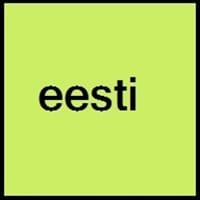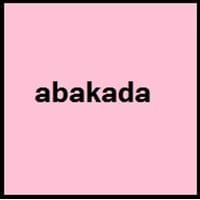Estonian vs Tagalog
Countries
Estonia, European Union
Philippines
National Language
Estonia, Gambia
Philippines
Second Language
Not spoken in any of the countries
Filipinos
Speaking Continents
Europe
Asia, Australia
Minority Language
Denmark, Russia, Sweden
Australia, Canada, Guam, Hong Kong, New Zealand, Singapore, United Kingdom
Regulated By
Institute of the Estonian Language
Komisyon sa Wikang Filipino, National Languages Committee
Interesting Facts
- Estonian language is considered to be powerful symbol of Estonian identity and culture.
- Estonian language has adopted many words with Finnish language.
- In 1593, "Doctrina Christiana" was first book written in two versions of Tagalog.
- The name "Tagalog" means "native to" and "river". "Tagalog"is derived from taga ilog, which means "inhabitants of the river".
Similar To
Finnish
Filipino, Cebuano and Spanish Languages
Derived From
Not Available
Not Available
Alphabets in
Estonian-Alphabets.jpg#200
Tagalog-Alphabets.jpg#200
Writing Direction
Left-To-Right, Horizontal
Left-To-Right, Horizontal
Thank You
aitäh
Salamat po
How Are You?
kuidas sul läheb
Kamusta ka na?
Good Night
Head ööd
Magandang gabi
Good Evening
Tere õhtust
Magandang gabi po
Good Afternoon
Tere päevast
Magandang hapon po
Good Morning
Tere hommikust
Magandang umaga po
Sorry
Vabandust
pinagsisisihan
I Love You
ma armastan sind
Iniibig kita
Excuse Me
Vabandage
Ipagpaumanhin ninyo ako
Dialect 1
Keskmurre
Batangas Tagalog
Where They Speak
Gabon, Northeastern coast of Estonia
Batangas, Gabon
Where They Speak
Georgia, South Estonia
Philippines
Dialect 3
Idamurre
Filipino
Where They Speak
France, Northwestern shore of Lake Peipsi.
Philippines
How Many People Speak
Not Available
Speaking Population
Not Available
Second Language Speakers
Not Available
Native Name
eesti keel
Tagalog
Alternative Names
Eesti keel
Filipino, Pilipino
French Name
estonien
tagalog
German Name
Estnisch
Tagalog
Pronunciation
Not Available
[tɐˈɡaːloɡ]
Ethnicity
Estonians
Tagalog people
Language Family
Uralic Family
Austronesian Family
Subgroup
Finno-Ugric
Indonesian
Branch
Finnic
Not Available
Early Forms
No early forms
Proto-Philippine, Old Tagalog, Classical Tagalog, Tagalog
Standard Forms
Estonian
Filipino
Language Position
Not Available
Signed Forms
Estonian Sign Language
Not Available
Scope
Macrolanguage
Individual
ISO 639 6
Not Available
Not Available
Glottocode
esto1258
taga1269
Linguasphere
No data available
31-CKA
Language Type
Living
Living
Language Linguistic Typology
Subject-Verb-Object
Object-Verb-Subject, Subject-Verb-Object, Verb-Object-Subject, Verb-Subject-Object
Language Morphological Typology
Agglutinative
Not Available
Estonian and Tagalog Language History
Comparison of Estonian vs Tagalog language history gives us differences between origin of Estonian and Tagalog language. History of Estonian language states that this language originated in 13th century whereas history of Tagalog language states that this language originated in 1593. Family of the language also forms a part of history of that language. More on language families of these languages can be found out on Estonian and Tagalog Language History.
Estonian and Tagalog Greetings
People around the world use different languages to interact with each other. Even if we cannot communicate fluently in any language, it will always be beneficial to know about some of the common greetings or phrases from that language. This is where Estonian and Tagalog greetings helps you to understand basic phrases in Estonian and Tagalog language. Estonian word for "Hello" is Tere or Tagalog word for "Thank You" is Salamat po. Find more of such common Estonian Greetings and Tagalog Greetings. These greetings will help you to be more confident when conversing with natives that speak these languages.
Estonian vs Tagalog Difficulty
The Estonian vs Tagalog difficulty level basically depends on the number of Estonian Alphabets and Tagalog Alphabets. Also the number of vowels and consonants in the language plays an important role in deciding the difficulty level of that language. The important points to be considered when we compare Estonian and Tagalog are the origin, speaking countries, language family, different greetings, speaking population of these languages. Want to know in Estonian and Tagalog, which language is harder to learn? Time required to learn Estonian is 44 weeks while to learn Tagalog time required is 44 weeks.





